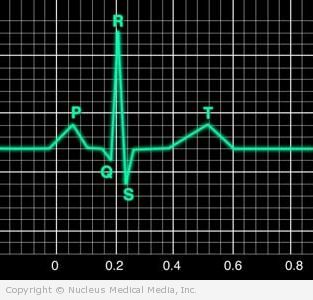Heat Exhaustion and Heat Stroke
Heat Exhaustion and Heat Stroke – Definition
Heat exhaustion is an illness that occurs when someone is too active in hot temperatures. Heat stroke is a more severe illness that occurs under the same circumstances, but can be life-threatening.
Heat Exhaustion and Heat Stroke – Causes
Both heat exhaustion and heat stroke happen under the following conditions:
- Very hot environment
- Heavy activity
- Too little fluid and salt intake
Heat Exhaustion and Heat Stroke – Risk Factors
A risk factor is something that increases your chance of getting a disease or condition.
- Participating in a job or activity that involves long periods of outdoor activity in hot weather
- Age: elderly or the very young
- Taking drugs that interfere with the way your body handles hot weather, including:
- Phenothiazines
- Anticholinergics
- Antihistamines
- Beta-blockers
- Benzodiazepines
- Amphetamines
- Neuroleptics
- Tricyclic antidepressants
- Cocaine
- Alcohol
Heat Exhaustion and Heat Stroke – Symptoms
Symptoms of heat exhaustion may include:
- Temperature over 37.8°C (about 100°F)
- Low blood pressure
- Fast pulse
- Moist skin, sweating
- Muscle cramps and tenderness
- Nausea, vomiting
- Dizziness or lightheadedness
- Confusion
- Headaches
Symptoms of heat stroke may include:
- Temperature over 40.5° C (about 105° F)
- Weakness, dizziness
- Blurred vision
- Confusion, delirium, unconsciousness (can progress to coma)
- Seizures
- No sweating
- Pale, dry skin
- Fast breathing, fast irregular pulse, high blood pressure
Heat Exhaustion and Heat Stroke – Diagnosis
The doctor will ask about your symptoms and medical history, and perform a physical exam. Tests may include:
- Blood tests
- Electrocardiogram (ECG, EKG) — a test that records the heart’s activity by measuring electrical currents through the heart muscle
Heat Exhaustion and Heat Stroke – Treatment
Heat Exhaustion
Treatment for heat exhaustion includes:
- Moving the person to a cool, shady area
- Giving adequate fluids—It is best to give fluids that contain both salt and sugar. If the person isn’t able to drink, it may be necessary to give fluids through an intravenous line.
- Encouraging the person to rest
Heat Stroke
Treatment for heat stroke includes:
- Removing clothing
- Moving the person to a cool, shady area.
- Actively cooling the person — The most effective way is called “evaporative cooling.” In evaporative cooling, the person is sponged with cool water or sprayed with cool mist, and fans are used to blow air onto the person.
- Giving intravenous fluids
- Giving medications — These may be necessary if the person is having seizures or uncontrollable shivering.
- Careful monitoring — People who have undergone heat stroke need regular and careful monitoring of body temperature, heart rate, blood pressure, and breathing rate. Blood tests will be repeated at regular intervals to monitor how the body’s organs are responding to the shock of heat stroke.
If you are diagnosed with heat exhaustion or heat stroke, follow your doctor’s instructions.
Heat Exhaustion and Heat Stroke – Prevention
To help prevent heat exhaustion and heat stroke:
- Avoid prolonged exposure to high temperatures.
- If you have to work or exercise under hot conditions, drink lots of fluids (preferably sports drinks, which contain both salt and sugar), and take frequent breaks in the shade.
- If you have a risk factor for heat exhaustion or heat stroke, be very careful of doing activity in hot weather. Take regular rests and drink lots of fluids.
- During heat waves, try and spend time indoors with air-conditioning or go to an air-conditioned shelter. This is especially important for elderly adults.

